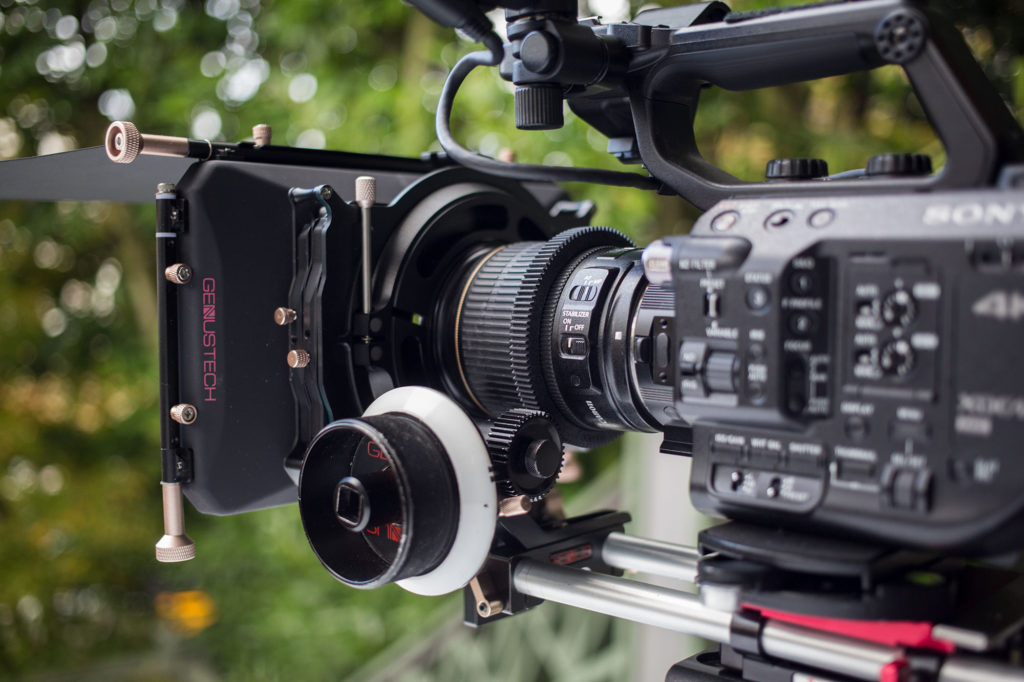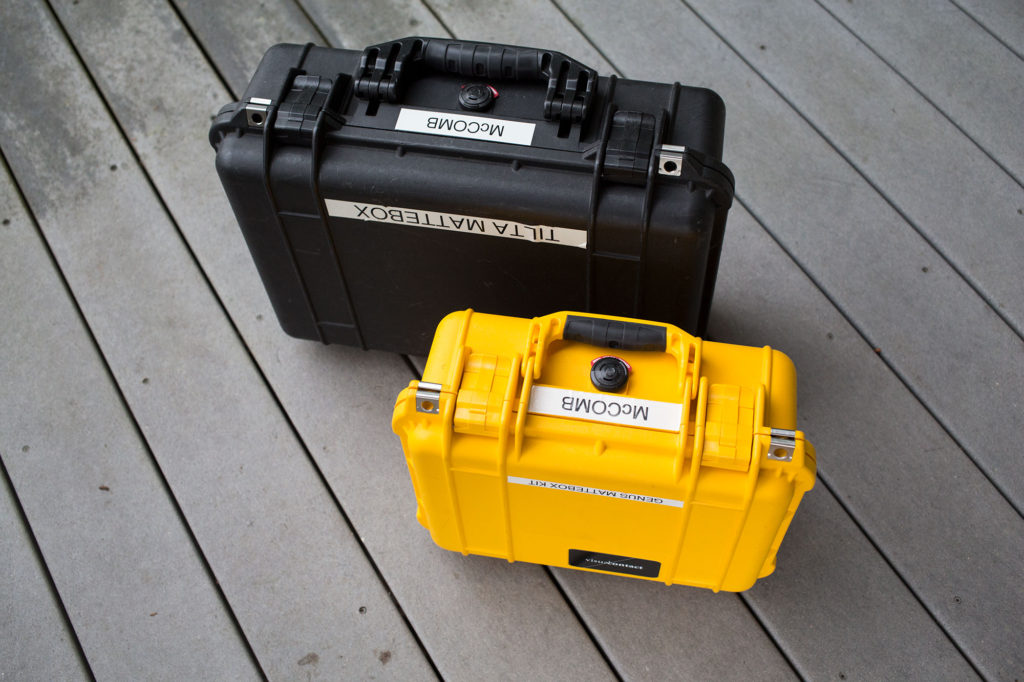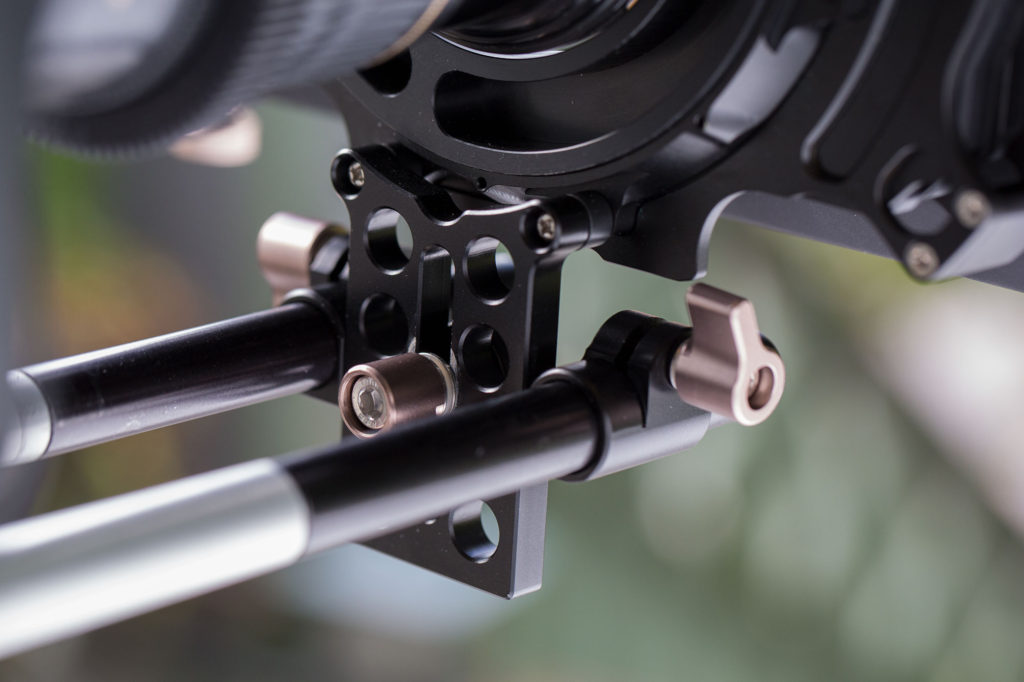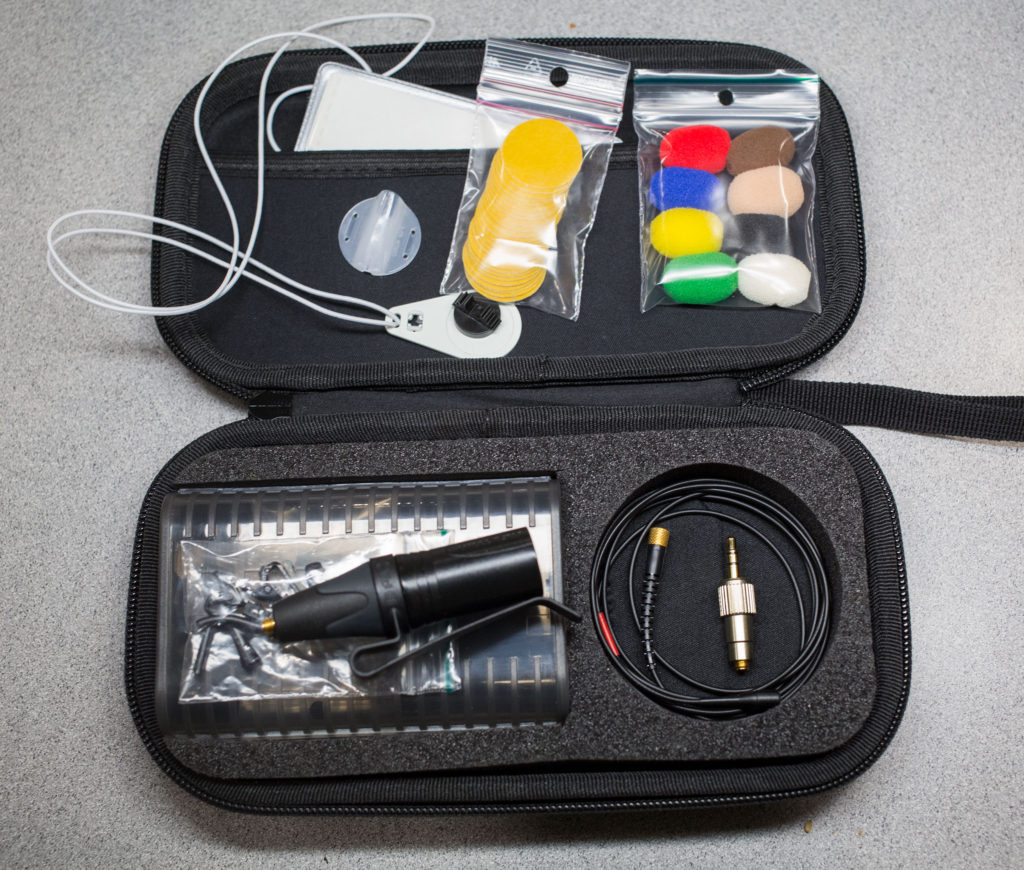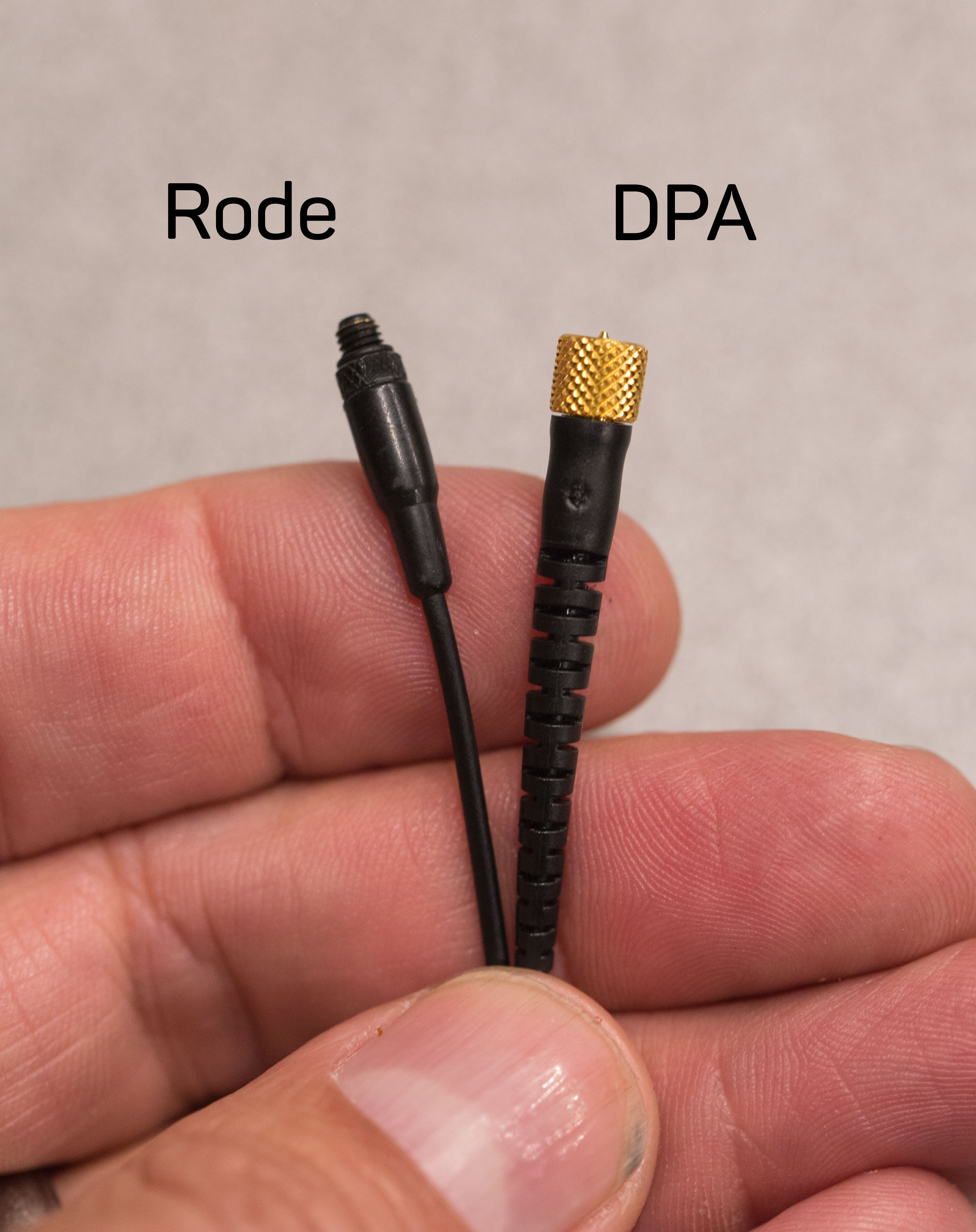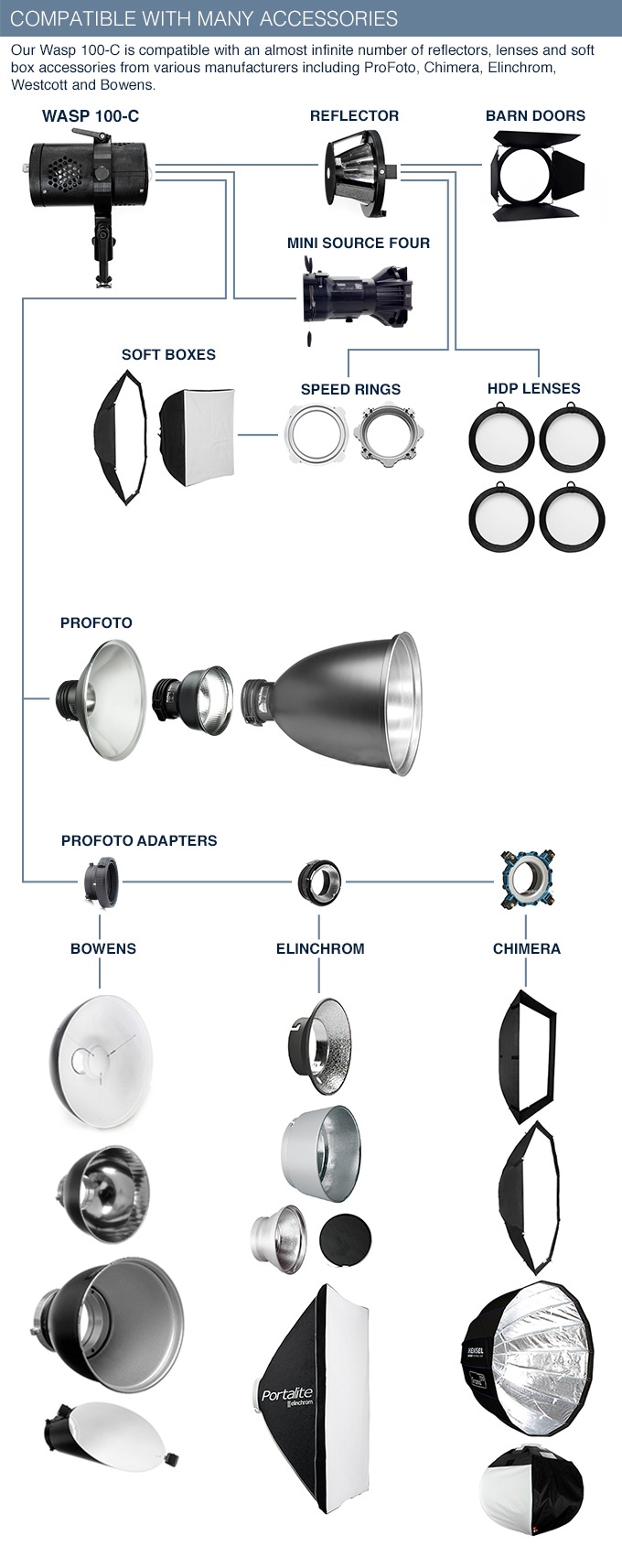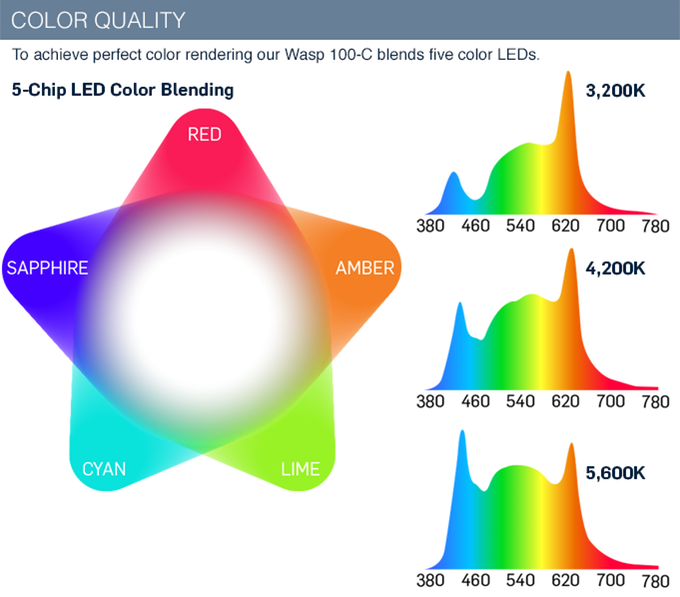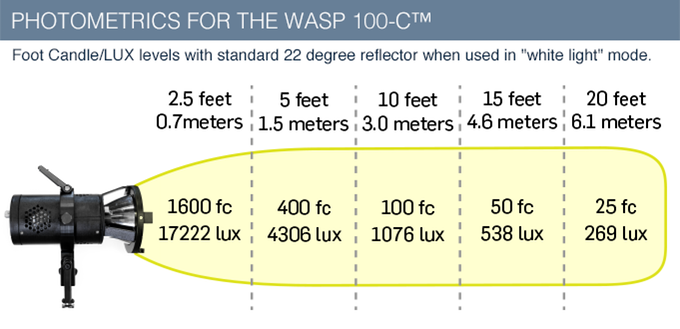You’re driving home at the end of a long day, turn a corner and run straight into the sun. Bam! You’re momentarily blinded. You reach up for the sunshade, and twist it down. Ahhhh. Five minutes later, you’re home with a cold beer in your hand.
For most documentary filmmakers, having a matte box is like having a visor on your car. You won’t use it very often, but when you do need it, you’ll be glad it’s there. Unfortunately, however, a matte box does not come standard with a camera like a visor does with a car. There are a million camera setups, so there is an bewildering array of matte boxes.
My own matte box journey began a few years ago when I picked up a Genus Matte box Lite. This simple solution snaps onto the front of your lens via a ring that screws into your filter threads. It worked great — as long as I used a zoom and didn’t have to change lenses frequently.
But alas, it didn’t take long before my needs become more complicated. When I began using prime lenses more frequently, the weight on the front lens element was too much for my Contax-Zeiss primes. The barrel of the lens twisted off it’s moorings. After a second repair, the technician warned me: “Don’t screw anything heavier than a lens filter onto the front of this lens.”
So I ponied up for a Tilta matte box that had a swing away arm to enable easy lens changes, which mounted to rails for support. But this is a heavy solution, and over the years I’ve found myself leaving it at home when I rolled out on documentary shoots.
When Genus invited me to review their Genus Production Mattebox, (which I’ll hence refer to as GPM) I was eager to try it out. Genus has a reputation for making matte boxes that are a good fit for filmmakers with simple needs. Here’s what I discovered.
Pros:
Relatively Light weight. 2.2 pounds with all flags attached (vs. 2.9 pounds for Tilta-but Tilta has swing-out arm and the GPM, although one can be added as an option).
Deep French flag. The GPM has a nice, deep French flag which cuts 6.35″ of light off the top of your lens. By comparison, my Tilta is 2″ shallower. This extra depth goes a long way to reducing the amount of light hitting the lens. Love it!
Multiple options for mounting. The GPM comes with two options for mounting the box to your lenses. For larger glass, use the included nun’s knickers. For lenses 82mm and smaller, use one of the half dozen included step-up rings, which vary in size between 52mm and 77mm. But the truth is, I don’t use any of these things. I simply align the box in front of my lens and start shooting.
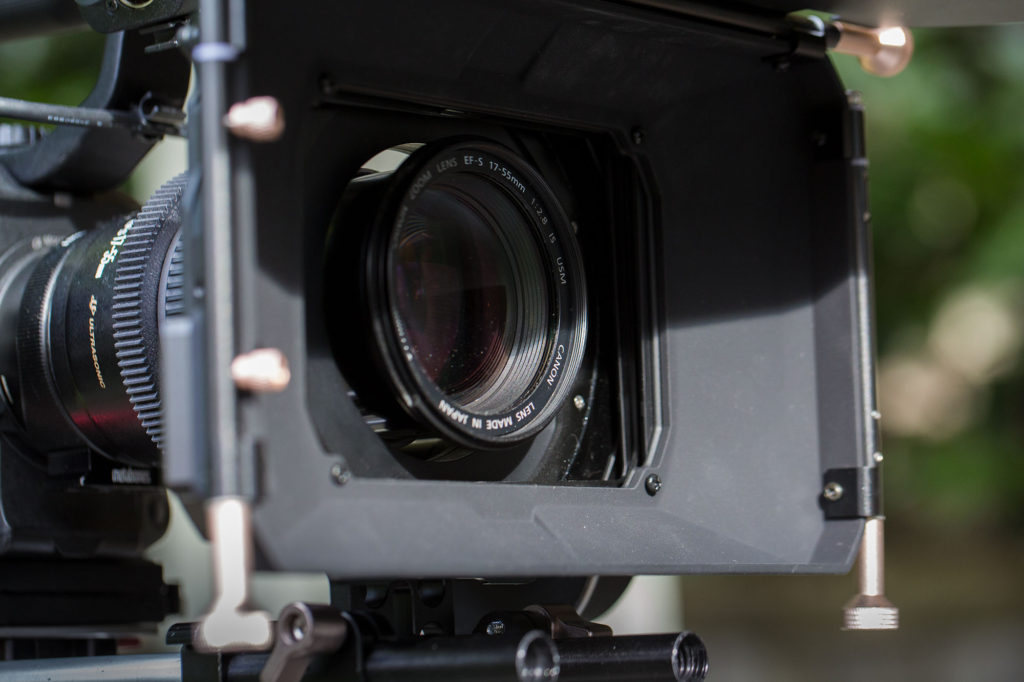
Since I use a matte box simply to keep light from striking and flaring the lens, it’s not necessary to block light from entering the rear of the box. This allows easy use with lenses the change length when focused, such as my Canon EFS 17-55mm f/2.8.
The reason you’d need to choose a mounting solution that blocks all light from the rear is if you’re using a filter in the tray, to eliminate reflections caused by light entering from the rear of the matte box.
Small footprint. I am able to fit this matte box (not including the top flag) into a 1400 Pelican case. See the difference in size between the case I use to store my Tilta matte box and my GPM:
Tip: I store the top flag in a side zipper compartment on my camera case. If I stored it in the Pelican case with the matte box, I would have to use a larger case. So it makes sense to break up those storage locations.
Cons:
No option for bottom flag. But then, I think I’ve only ever needed to use a bottom flag once in my entire career. So it’s not exactly something I lie awake at night worrying about.
Lens changes are awkward without swing-away door. If you’re using prime lenses a lot (rather than the zooms that many documentary shooters prefer), this can be kind of a big deal. It’s a real pain to have to release the rail block, slide the box forward, change the lens, then slide it back and retighten it. But swing away arms add weight. And when it comes to matte boxes, I prefer lighter to heavier. Also, you will need the Genus Height Extension Bracket to adjust the box to the right height for different lenses.
Wide-format tray. The GPM box accepts only 4 x 5.65 filters, and Genus offers no tray adapter for it to accept 4×4 filters. Even though most documentary shooters won’t be using filters anyway, I wish there were an option to use it with 4×4 filters, because, well, those are the only filters I own! And 4×4 filters are more common than the wide format ones.
Update: Genus contacted me after this piece was posted with news they plan to make a 4×4 tray for the GPM. I look forward to testing it.
At the end of the day, my favorite thing about the GPM is that it’s small and light enough that I find I DO actually take it with me on shoots. Even though it stays in its case most of the time, when I need it, it is there. Just like that visor when I’m driving into the sunset on my way home.
